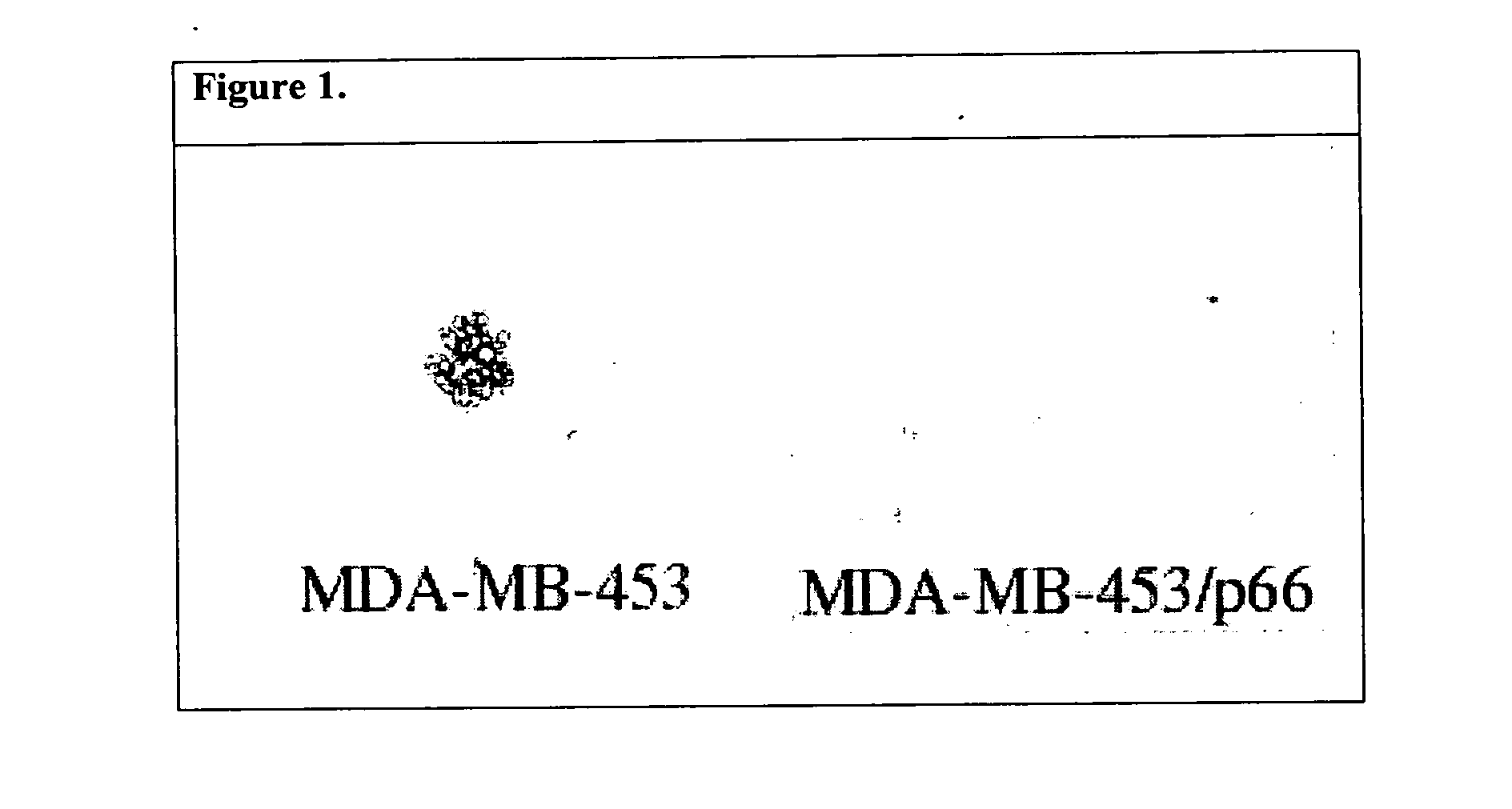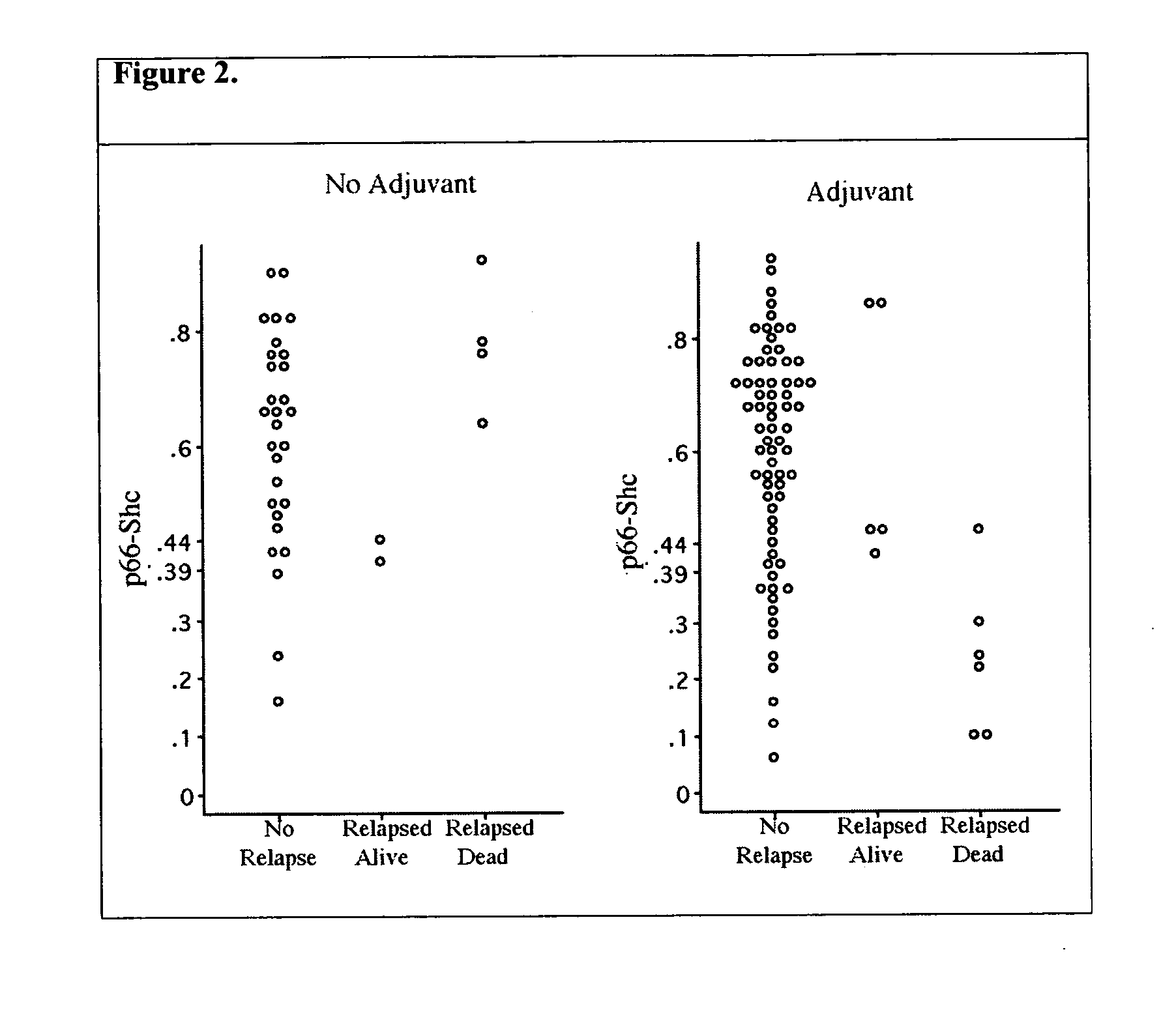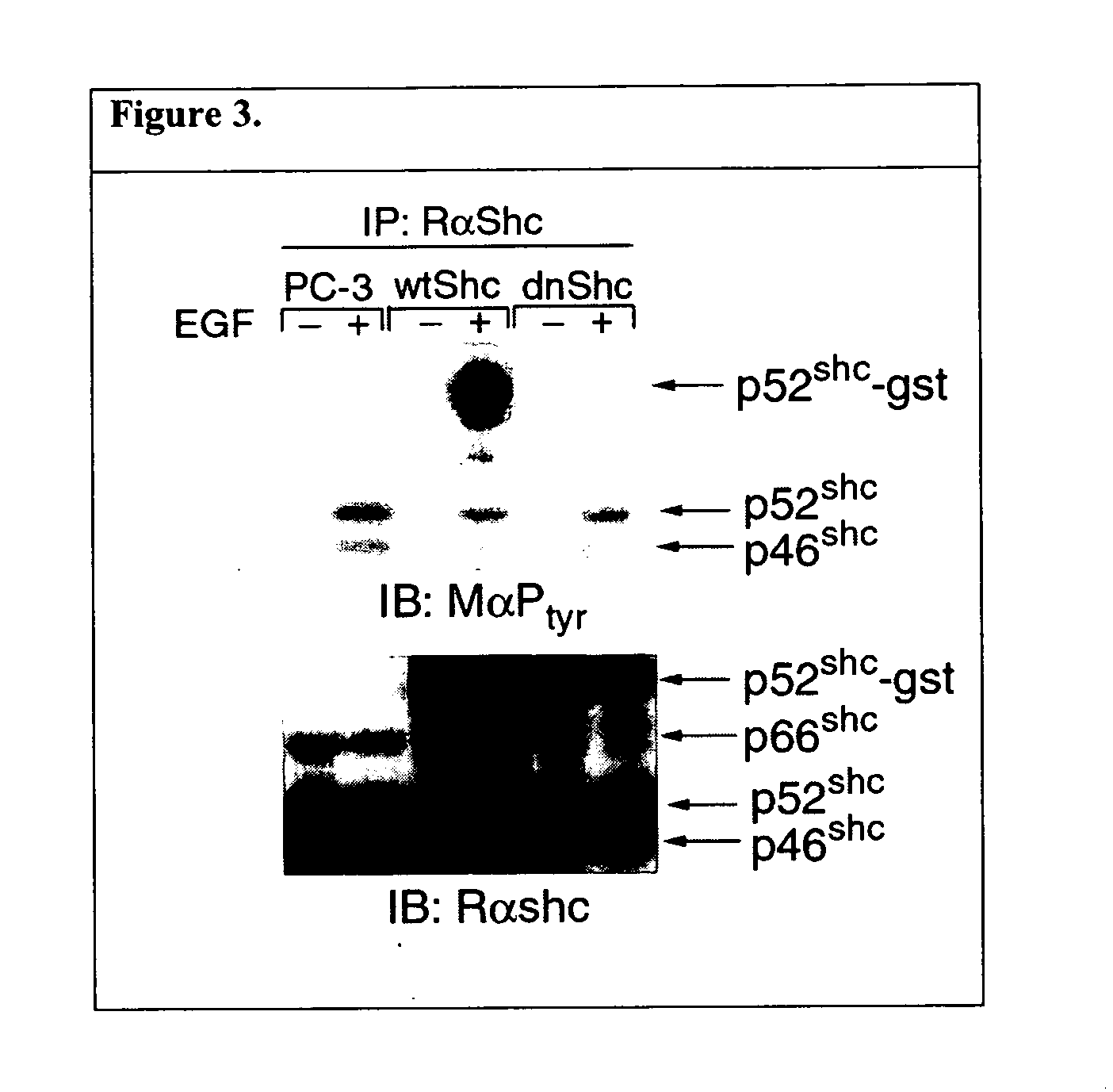SHC proteins as therapeutic targets in proliferative diseases
a technology of proliferative diseases and proteins, which is applied in the field of proliferative diseases with shc proteins as therapeutic targets, can solve the problems of difficult development of inhibitors, limited usefulness of most cancers, and inability to simply characterize cancers. , to achieve the effect of increasing the level of phosphorylated p66 sh
- Summary
- Abstract
- Description
- Claims
- Application Information
AI Technical Summary
Benefits of technology
Problems solved by technology
Method used
Image
Examples
example 1
Experimentals
[0075] p66 Shc Inhibits Anchorage-Independent Growth of Breast Cancer Cells.
[0076] Previously only low levels of p66 Shc had been detected in breast cancer cells that express high levels of PY-Shc and appear to depend upon PY-Shc signaling for various aspects of their neoplastic phenotype. This suggested that p66 Shc might normally suppress tumor development, and that loss of p66 Shc expression might convey selective advantage to tumor cells. To test this notion, the SKBR-3 and MDA-MB-5453 breast cancer cell lines that express very little, if any, p66 Shc were utilized. By transfecting these cells with a p66-Shc expression vector, several independent clones of SKBR-3 and MDA-MB-453 that re-expressed normal levels of p66 Shc were generated. Although these cells grew well in tissue culture, they lost ability to form colonies in soft agar, a classic anchorage-independent growth test that correlates with tumorgenicity (FIG. 1).
[0077] Of particular potential relevance to ...
example 2
Additional Embodiments
[0103] Proliferative Assays
[0104] One embodiment of the instant method identifies anti-proliferative agents based on their ability to alter the function or cellular levels of the Shc A proteins. In one version of this method, the candidate agents are contacted with one or more indicator cell lines in tissue culture for a sufficient period of time to allow the agent to act on the cells and alter Shc functions or amounts; which cell lines may include, but are not limited to the breast cancer cell lines known as SKBR3, BT474, MDA-MB-453, MDA-MB-468, MDA-MB-361, ZR-75-1, T47-D, and MCF-7. Alteration of Shc function or level can be detected and quantitated by any of a number of methods familiar to those skilled in the art. These methods include but are not limited to:
[0105] (a) The level of phosphorylated tyrosine 239, 240, and / or 317 in Shc A proteins can be semi-quantitatively determined by:[0106] (a) (i) fixing the cells in formalin and reacting the fixed cell...
PUM
| Property | Measurement | Unit |
|---|---|---|
| time | aaaaa | aaaaa |
| oxidative stress | aaaaa | aaaaa |
| chemical | aaaaa | aaaaa |
Abstract
Description
Claims
Application Information
 Login to View More
Login to View More - R&D
- Intellectual Property
- Life Sciences
- Materials
- Tech Scout
- Unparalleled Data Quality
- Higher Quality Content
- 60% Fewer Hallucinations
Browse by: Latest US Patents, China's latest patents, Technical Efficacy Thesaurus, Application Domain, Technology Topic, Popular Technical Reports.
© 2025 PatSnap. All rights reserved.Legal|Privacy policy|Modern Slavery Act Transparency Statement|Sitemap|About US| Contact US: help@patsnap.com



